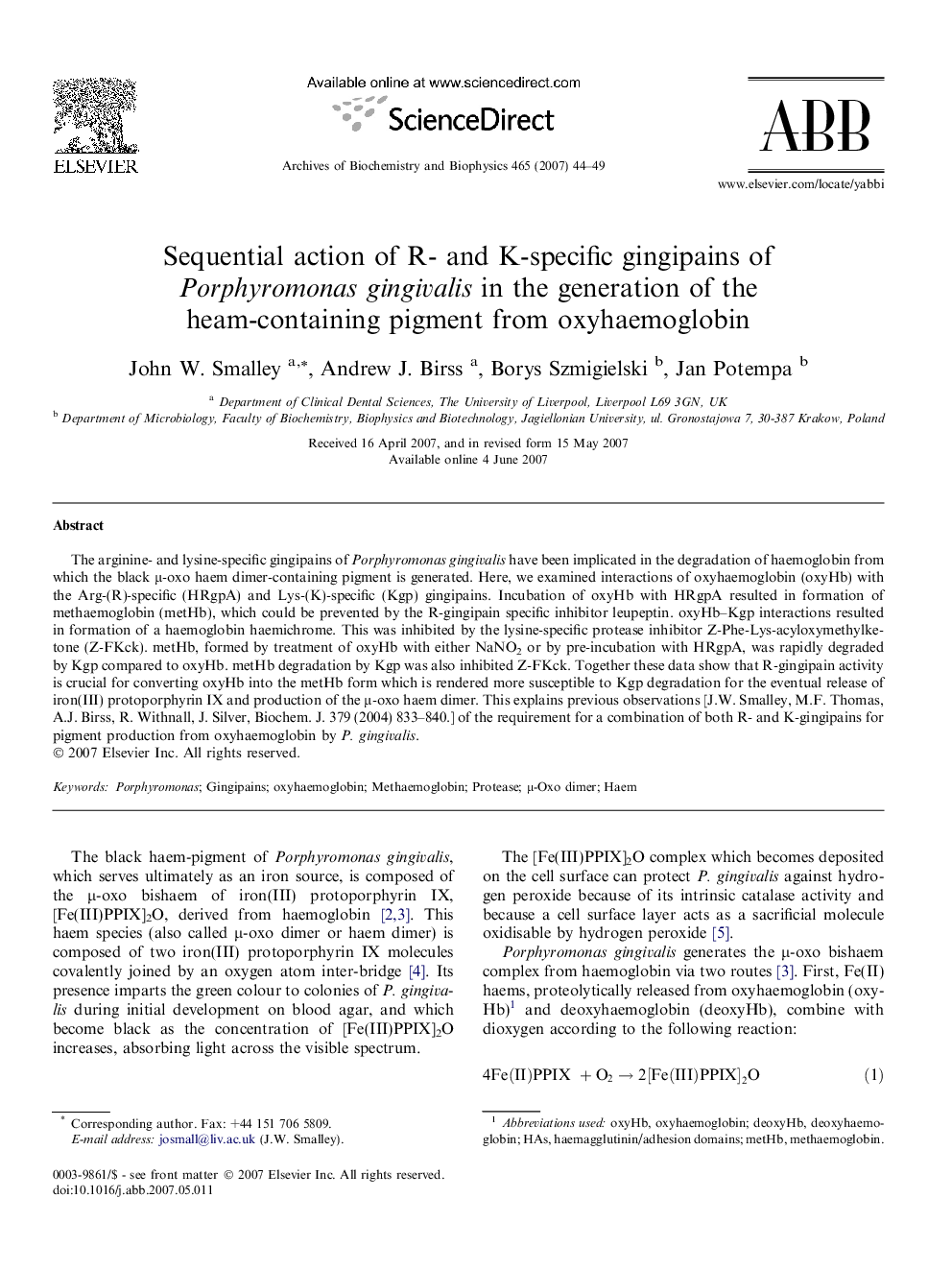| Article ID | Journal | Published Year | Pages | File Type |
|---|---|---|---|---|
| 1927038 | Archives of Biochemistry and Biophysics | 2007 | 6 Pages |
The arginine- and lysine-specific gingipains of Porphyromonas gingivalis have been implicated in the degradation of haemoglobin from which the black μ-oxo haem dimer-containing pigment is generated. Here, we examined interactions of oxyhaemoglobin (oxyHb) with the Arg-(R)-specific (HRgpA) and Lys-(K)-specific (Kgp) gingipains. Incubation of oxyHb with HRgpA resulted in formation of methaemoglobin (metHb), which could be prevented by the R-gingipain specific inhibitor leupeptin. oxyHb–Kgp interactions resulted in formation of a haemoglobin haemichrome. This was inhibited by the lysine-specific protease inhibitor Z-Phe-Lys-acyloxymethylketone (Z-FKck). metHb, formed by treatment of oxyHb with either NaNO2 or by pre-incubation with HRgpA, was rapidly degraded by Kgp compared to oxyHb. metHb degradation by Kgp was also inhibited Z-FKck. Together these data show that R-gingipain activity is crucial for converting oxyHb into the metHb form which is rendered more susceptible to Kgp degradation for the eventual release of iron(III) protoporphyrin IX and production of the μ-oxo haem dimer. This explains previous observations [J.W. Smalley, M.F. Thomas, A.J. Birss, R. Withnall, J. Silver, Biochem. J. 379 (2004) 833–840.] of the requirement for a combination of both R- and K-gingipains for pigment production from oxyhaemoglobin by P. gingivalis.
